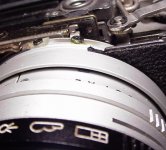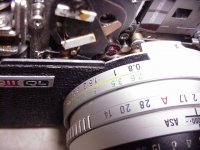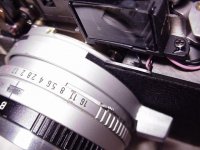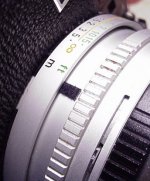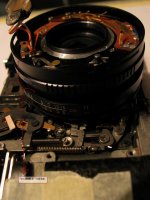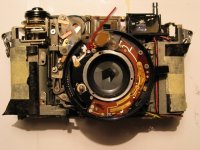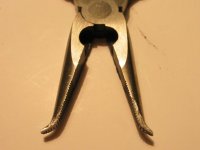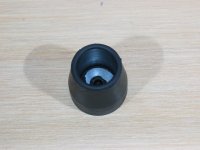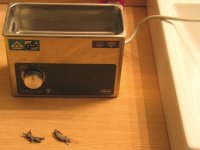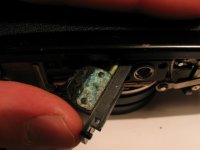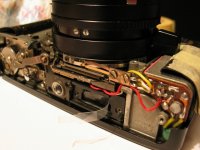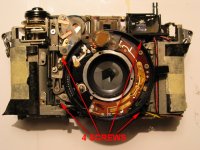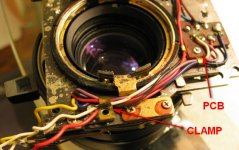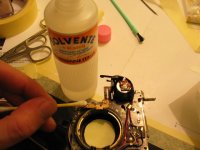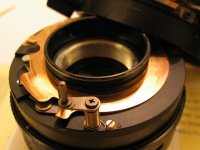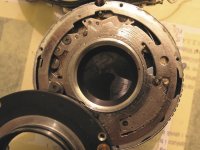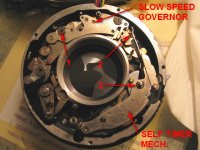TOOLS
First you’ll need tools of course. Here is what comes to my mind and what I’ve been using for last ten days or so:
-Phillips head screwdriver (lightly magnetized preferably; be sure it’s small and sharp, you don’t want to leave scars all over)
-few differently sized flat screwdrivers (some of screws inside are plain headed; this are particularly nasty)
-long nose pliers
-tweezers (to handle wires)
-soldering iron
-multifunction voltmeter (for hunting broken wires and dead solders)
-scalpel
-knife
-scissors
-Canonet-opener (this is how I call modified long nose pliers that with bent and filed tips; be sure to file it to exactly match the retaining rings’ notches, while being as flat as possible so it won’t slip from notches when you apply some force and that you file them in way that these wont scratch cylinder in which particular retaining ring is contained – that means their outer side; pic #1)
-rubber lens extractor (or whatever you might want to call it – it’s walker’s rubber tip with 25mm inner diameter; I got it very cheap from shop that sells orthopedic aids; pic#2)
-masking tape (to keep things in place)
-ultrasonic bath (for cleaning shutter mechanism; you don’t need this one, of course, I just want to brag about it; got it from my dentist friend, hehe; pic#3)
-small post-it notes (I’ve found that it’s excellent way of tagging screws; put particular screws or whatever in upper sticky part of post-it, press it down so it wont escape and write down where it belongs)
-box of Kleenex
-box of Q-tips
-lighter fluid (Ronsonol, Zippo; these should be practically the same, contain naphtha; to clean inside, outside; do not harm to plastic, metal, etc..)
-windows cleaning fluid (you call it Windex, I guess; for rangefinder system cleaning)
-nail polish remover (to free some of the screws)
-transparent nail polish (to secure ‘em back)
-white vinegar (to clean leaked battery residue)
-teflon or silicone grease (for focus helix lubrication, do not use white lithium grease as some suggest to be on the safe side)
-thin double sided adhesive foil (I’m not sure, but I think that one I got was made by 3M and cost around $4 for B1 piece, that’s 707x1000 mm – more that you’ll ever need; used for leatherette gluing; doesn’t have to be extra sticky, on contrary, I think that light stickiness is preferable, since it’s going to be easier to remove it again if needed)
-divider with blunted tips (for front silver filter retaining ring and central element extraction, I posted pic in one of previous posts)
Can’t think of anything else right now…
SERVICE MANUAL
Get complete manual here:
http://pentax-manuals.com/repairs.htm
Most important pages in much better quality:
http://www.kyphoto.com/classics/repairmanuals.html

